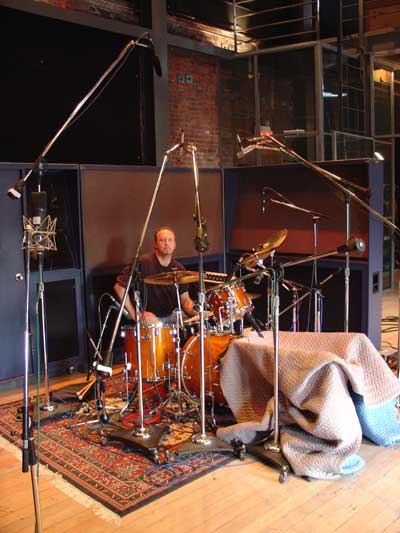Studio Drummer – Foundations!
Miles Davis was once asked what were the raw essentials of having a great band. Miles replied, you have to have a great drummer. The interviewer then asked, what if you don’t have a great drummer? Miles replied,
YOU DON’T HAVE A BAND!
At e-studio-drummer we like to break down important aspects that are often overlooked. Often these aspects are overlooked to looked for different reasons. Inexperience is the first stumbling block. Trying to prematurely look ‘cool’ is often the biggest culprit. While sometimes this can work in your favor more often it’s an impediment.
YOU are the foundation of the music. Of course this works in concert with the rhythm section as well. But think of it as building a house. You are the framer. But first and foremost you are the creator of the foundation. The foundation is literally and figuratively the ‘bottom line’.
Very precise! In e-studio-drummer mentality, you are ‘framing a house’. Inches and fractions of inches matter, akin to the literal foundation and co-framer of a house.
If you alone, are out by an inch or less creating this foundation, by the time you get 2 stories up in the framing of a house you’ve got major problems.
For eg. If you screw up the measurement or the cut of an important structural beam, you’ve screwed up the house’s structure exponentially as the construction above this mistake continues! In our case, the ‘construction’ above us are the live band members and/or overdubs that are being added on top of the foundation you’re creating.
Of course we are human and not perfect. But we all continue to strive for more precision AND more creativity. Great creativity and fluidity is not that far off from plum lines, leveling and measuring.
But it all starts at this foundational level.
Give a lot of attention to note length. Discover and practice note duration. If you’re underpinning a large band for example and you have pauses and rests in the music you have to understand note length. I played brass for years before drums which was a great foundation for this aspect. Be aware of this very important aspect.
Being second nature with a click track or metronome is the bedrock of this. Burning note length into your head is not only when you’re playing and controlling a band large or small. It’s also when you’re resting for 2 beats, a bar or more. Learn how to perhaps mark enough time for the band members if necessary. If someone tends to rush or drag for example, mark time with perhaps a light hi hat to keep everyone on the same page
For starters, a physical aspect,
Thinking of our focus on foundation you have to have a solid throne. Have you ever observed a pianist and how they will meticulously adjust their throne/stool height and positioning so as to maximize their performance, endurance and musicality?
We have this very important foundational issue as well. When we have 4 limbs in motion often with a huge amount of physicality you have to have this obvious but so often overlooked piece of gear nailed.
ONCE YOU HAVE A VERY SOLID UNDERSTANDING OF THIS FOUNDATIONAL LEVEL YOU CAN START TO ‘MOVE’ ASPECTS OF THE INSTRUMENT WITH FULL INTENTION, AS IN ‘BACKBEATS’ETC
More discussion on this aspect coming from e-studio-drummer.com!






